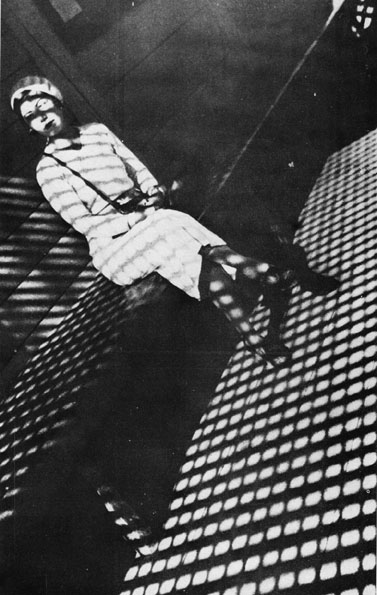Alexander Rodchenko
Inspirational images by Rodchenko:


Rodchenko diverged over many parts of constructivist art, even fashion illustration, designing the costume for plays in 1914 in a constructivist manor. Rodchenko was known for his unusual image angles, taking images from different perspectives, common in the constructivist movement; using abstract shapes to create something new.
He
took a lot of images taking advantage of the new scale of buildings, many from
above or below; celebrating new structures. He had a much straighter style
approach to photography, using a large depth of field (showcasing what a camera
can do) and rejoicing new communication and technology. He was so at one with
constructivism at the time critics began to complain that he didn’t care about
the actual content of his photographs. Rodchenko is well known for using a
Leica, as shown in his picture “Girl with Leica”, 1934. I really admire his
full use of tonal range, although the shadows are not quite black.
I
chose to incorporate a range of images/ideas of Rodchenko’s into my work. I
tried not to focus on the content of the image too much but wanted to focus on
the actual structure and composition of the picture without making it look too
modern. I really admire the pieces of work shown, using squares in frames/lighting
to actually make the composition of the image. Whilst looking for places to
take my images I came across this lamppost that looked quite vintage and
instantly reminded me of the content in some of Alexander’s images as shown. I
tried to gain a full tonal range whilst taking my images, using a slightly
longer exposure and a small aperture (on the lowest iso of 100).
My final image (inspired by Rodchenko and constructivism):
I
composed my picture by trying to make the lamppost slanted and the lines from
the net coming in from the side, creating lines and structures. The main reason
I chose to photograph this area, other than the constructivist inspiration, was
the combination of modern and old coming together. To me, the lamppost looks
more vintage inspired and with the grouping of the football net it adds an
element of something more modern, towering over the surroundings. For this
reason I also decided to keep the security camera in the background,
celebrating technology today as Rodchenko did in his images. I tried to give
the same texture to the sky as prominent in Alexander’s work, full tonal range
but at the same time not too overpowering.

















